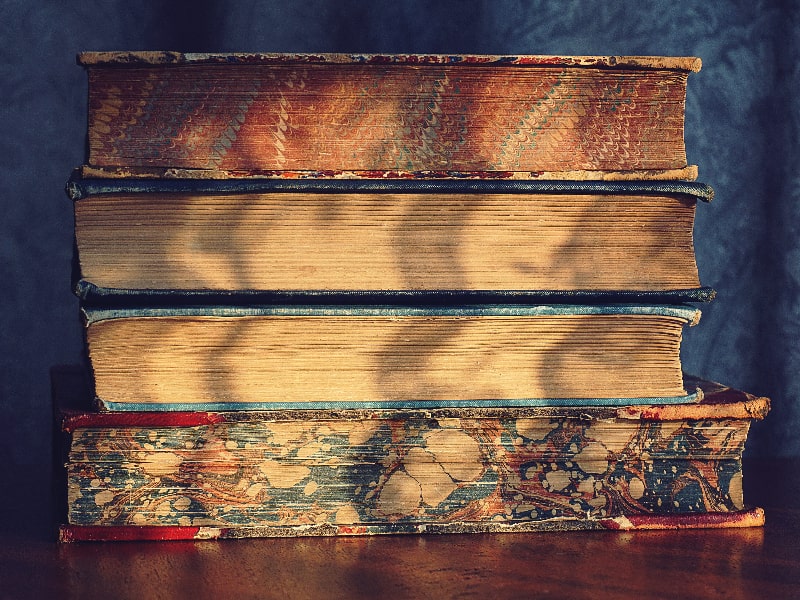Japanese literature: what it is, its origin, artistic development, works and authors
Contents
What is Japanese literature?
It is considered that the emergence of Japanese literature spans about two millennia, moments in which the first literary expressions are shown and in which it is possible to register a great influence from Chinese literature.
In its beginnings, Japanese was a language that did not have a defined or ungrammatical form of writing until the arrival of Chinese ideograms, tools that will allow the recognition of the first recorded manifestations of Japanese literature that come from oral transmission. Kanji was the official form of writing, as hanzi had previously been used as the Chinese writing system and manyogana, an adaptation of the first model applied in Japanese territory.
History and origin of Japanese literature
Known as the Heian period, it consists of the classic stage of literary development in Japan, a time when interest in foreign cultures, especially China, was reduced and the focus returned to Japanese culture, so that writers began to create their works using Japanese characters, leaving aside those previously used. During this period, the participation of both male and female writers was reflected. Women dedicated themselves to writing from their own environments and were characterized by producing writings full of varied contents, marked by love, humor, etc.

Later, Japan underwent one of its most complex periods, as from the 12th century until the beginning of the 17th century it experienced a series of conditions that limited artistic production, such as constant wars, famine and the poverty into which the nation fell. These conditions, consequently, allowed only monks to dedicate themselves to writing, a time when other works written by monks became known. Even so, performances in the theater began to appear, whose main objective would be that of patriotic exaltation, as well as religious propaganda, due to the writing by Buddhist monks.
Development of literature in Japan
One of the most relevant works for Japanese literature is the Kokinshu, a collection of ancient and modern poems that represents one of the most important genres of the region in terms of literary expression: the poem, which for Japan is consolidated mainly as the waka or Japanese song. Its content reveals an inclination of the works towards national vindication, as well as a quest to strengthen Japan’s identity in the face of the great influence it had received from China in recent centuries.
Another fundamental moment for the development of Japanese literature took place with Matsuo Basho, who dedicated himself to the composition of haiku, a type of poetry from this place that, with a minimum amount of words and a focus on nature, seeks to express as much as possible by the poet.
Ultimately, Japanese literature, especially in its stage of emergence and consolidation, begins to work a great variety of literary forms among which stand out the short poems that will be the beginning of the haiku, the modern novel, the manga, the story, the tale, the epic, the songs, the anecdotes, the memoirs, the diaries, the essay and the travel stories.
The main characteristics of literature in Japan
Among the most important characteristics of Japanese literature are the following:
Writing system: one of the most relevant features, especially referring to the development of literature in Japan, has to do with the writing system that is beginning to be used, since they use the kanji as the official form of writing, as they used the hanzi, a foreign writing system and that belonged to China, where later appears the manyogana, which will be the first attempt of the Japanese to consolidate a writing system of their own.
Oral tradition: even with the influence that Japan received from China, Japanese literature will show in its development manifestations that reflect their cultural practices such as rites, folklore and, in general, the religion they followed. This, as well as reflecting in Japanese literature the importance and weight of the oral tradition in their region.
Artistic variety: another relevant aspect of Japanese literature and in general of the culture that is beginning to flourish in the region, has to do with the variety of artistic expressions that are emerging. Among them, in the part of literature appears the written production in different subgenres and formats, such as theater, novels, essays, poetry, among others, as well as popular dances and another series of practices related to their daily activities and customs.
Kataribe: in Japanese literature, the kataribe is a person who is in charge of reciting the stories of the population, thus playing a decisive role in the preservation of primitive oral narratives, since in addition to this he transmits not only facts or events of great importance, but also all kinds of content related to the myths and legends of the region. This work was carried out by women, who built fundamental links between what would become oral and written literature.
External influence: although Japanese literature was greatly influenced by foreign cultures, such as China and the West, this was not a determining factor for the production of literature in the area as such, given that despite the influence, Japan developed important works and formats that today make it one of the most important reference points in world literature. This is largely due to the cultural content of its works, where aspects such as the customs of the populations, behaviors, traditions and habits are observed.
Nostalgic tinge: another of the most relevant aspects of Japanese literature has to do with the expressive inclination of its content, given that, in the case of novels in particular, the themes dealt with by Japanese authors are somber, melancholic, nostalgic and sad, which is why Japanese literature is usually associated with a sensitive and moving panorama.
Female participation: in addition to the above, we cannot ignore the female participation in Japanese literature, which is perhaps one of the most important and one of the areas in which women have had the best recognition, both as writers and as promoters of their customs. Women have a substantial role in Japanese literature, because despite the submissive and subjugated practice by the male figure, they manage to develop recognized literary works and achieve an important level of culture.

One of the most important works of Japanese literature is the anthology Kokinshu, or Collection of Ancient and Modern Japanese Poems, which was organized by Emperor Daigo around the year 905. Other works of great relevance also appear, among which are the Gosennshu and the Shuyshu, two other volumes of poetic collections. As for prose writing, works such as private diaries, poetic stories, lyrical novels and books of impressions appear. On the other hand, among the authors of the region, especially in terms of Japanese literature written by women, there is Sei Shonagon with her work “Makura no Soshi” (pillow book), an autobiography-style work that allows us to observe some characteristics of the Japanese culture of the 11th century, as well as the author Fujiwara.
Other key texts of Japanese literature will be “Ise Monogatari” or Songs of Ise, and Songs of Yamato”, a selection of poems, Tsukuri-monogatari, fictional stories, “Genji Monogatari”, a court novel by the court writer and poetess Murasaki Shikibu. Other notable authors include Matsuo Basho in haiku, Saikaku Ihara in novel writing, and Chikamatsu Monzaemon, an outstanding playwright of the area who dedicated himself to the creation of plays both in kaburi, a form that was represented by people, and bunraku, whose characters were represented by puppets.
